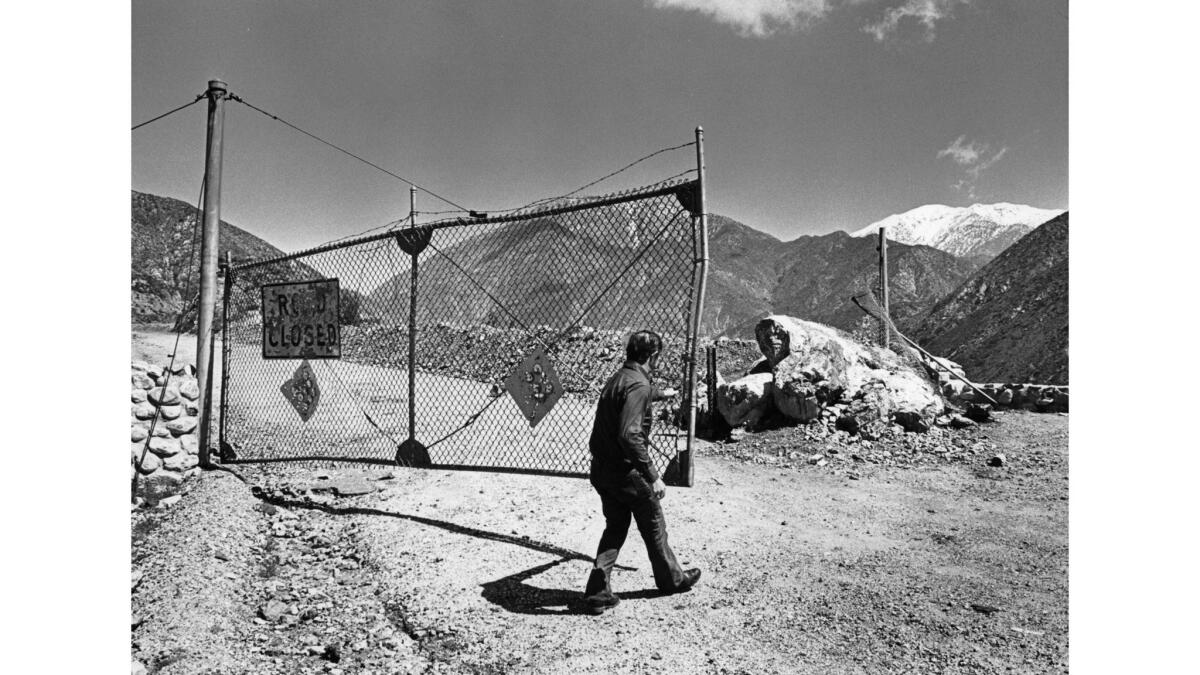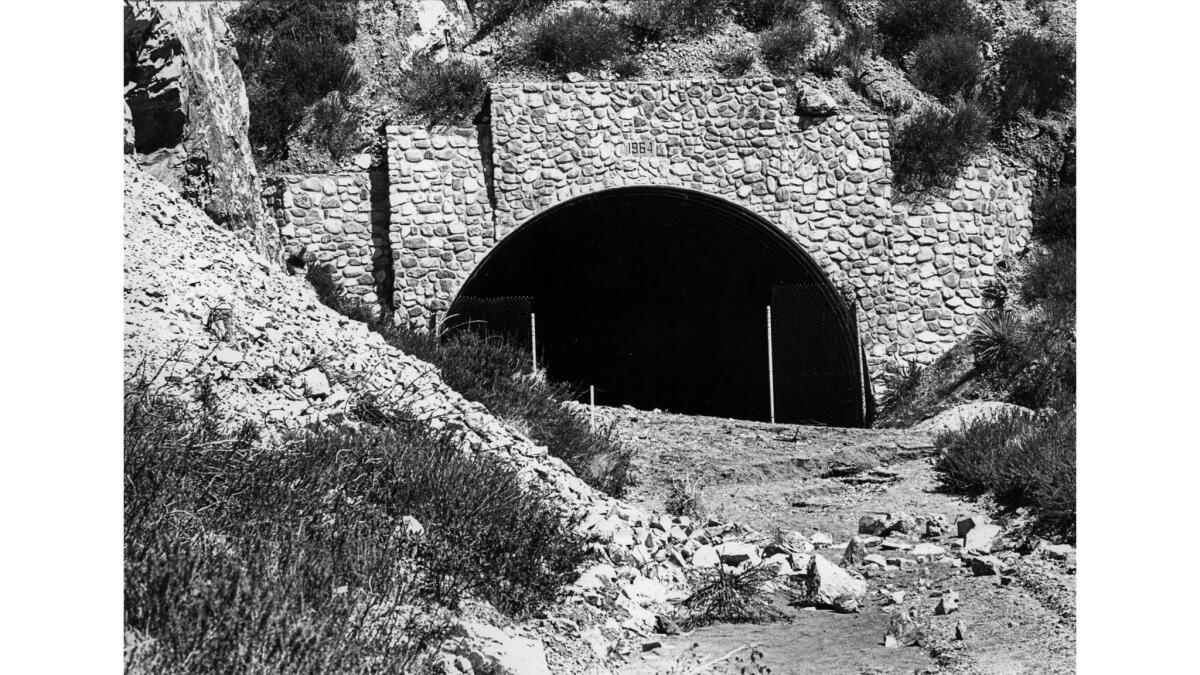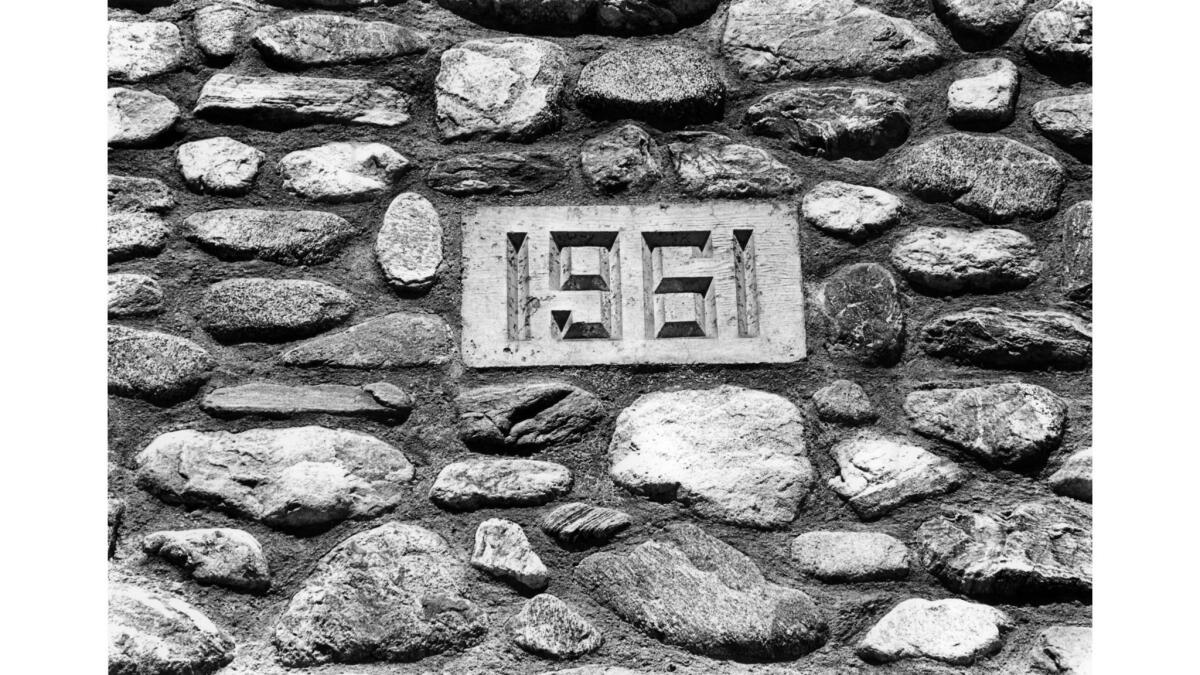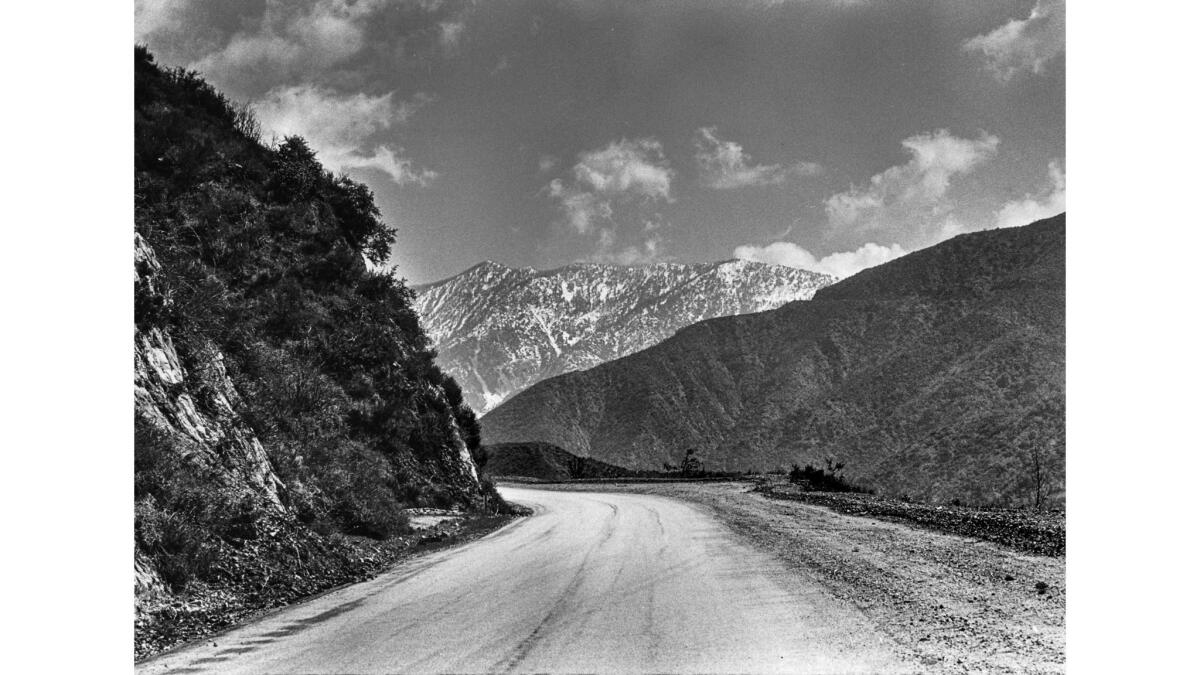From the Archives: L.A.’s Cold War highway to nowhere

Cold War era leaders determined Los Angeles residents needed an escape route through the San Gabriel Mountains in case of a nuclear attack. Construction work began on Shoemaker Canyon Road. The 25-mile escape route would have connected the San Gabriel East Fork Road with Largo Vista in the Mojave Desert.
Work started in 1956, but only four miles was finished. Construction officially stopped in 1969.
Staff writer Paul Dean reported in the March 31, 1980, Los Angeles Times:
It has a name–Shoemaker Canyon Road.
It has stretch and direction–more than four miles hacked north across Angeles National Forest mountains within high sight of the San Gabriel and Morris reservoirs.
It has drains and tunnels and markers and after two decades of existence finally has earned a place on page H, square C4 of the 1980 edition of the Thomas Bros. map book.
Yet Shoemaker is a road to nowhere except, maybe, to memories of nuclear paranoia in America.
For when first under construction in 1956, this highway pointed to Largo Vista and the Mojave Desert and was blueprinted in part as a Civil Defense escape from fallout; one route among a spiderwork of exits in all directions should Los Angeles be threatened, even executed by an atomic attack.
And evacuation seemed a good possibility in that era of fear which remained just small bursts of imagination short of individual panic.
The cold war was hot. Southern California could claim more home and public fallout shelters than SAC had bombs. …
But command posts now are flood and earthquake relief facilities. Fallout shelters are wine cellars. Civil Defense Day (once coincidental, but by no coincidence, to Pearl Harbor Day in California) is no longer marked on calendars.
And Shoemaker Canyon Road has met the same dead end. ...
Inmates from Sheriff’s Department detention camps accomplished much of the construction. But in 1969, Los Angeles County budget cuts halted work on Shoemaker Canyon Road. In 1984, the area was granted wilderness status.
These four photos by George Rose accompanied Dean’s story.



See more from the Los Angeles Times archives here
More to Read
Start your day right
Sign up for Essential California for news, features and recommendations from the L.A. Times and beyond in your inbox six days a week.
You may occasionally receive promotional content from the Los Angeles Times.






